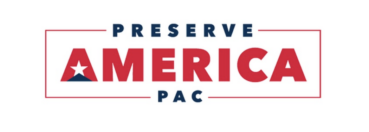About
FP1 Strategies is proud to have been the media consultant to Ohioans Against the Deceptive Rx Ballot Issue, a coalition of over 80 statewide groups in Ohio organized by the Pharmaceutical Research and Manufacturers of America (PhRMA) to defeat Issue 2.
Issue 2 would have tied prescription drug pricing for state health care programs in Ohio, such as Medicaid and insurance for government workers and retirees, to the costs paid by the U.S. Department of Veterans Affairs. Our advertising campaign helped educate voters about the dangers of this unworkable proposal to patients and taxpayers, and successfully beat back a $16 million-dollar campaign by the proponents.
Problem
Our coalition began the campaign at a decided disadvantage. In our March benchmark survey, the YES side was winning by a margin of 57 points: 68 to 11 percent.
With the debate in Washington, D.C. being dominated by Republican efforts to repeal and replace ObamaCare, voters were focused on health care and made clear holding down health care costs was the top issue facing policymakers in the state. Even more concerning was the fact that 84 percent of Ohioans said that the high cost of prescription drugs was either a crisis or major problem.
The proponents of Issue 2 had a powerful, simple and emotional issue to drive. They built the message of their campaign around the premise that Issue 2 would stop pharmaceutical companies from engaging in price gouging, save taxpayers $400 million a year and ultimately reduce prescription drug costs for all Ohioans.
Solution
We used extensive public polling and focus groups to hone a message and advertising strategy to put the proponents of Issue 2 on the defensive and redefine the terms of the debate.
We were fortunate to have the support of almost every prominent medical care provider and veterans organization in Ohio. Our polling showed that 79 percent of voters believed the fact that the groups representing Ohio’s doctors, nurses and pharmacists said Issue Two would increase their drug costs was a strong message. We ran the ads Dr. Geraldine, Dr. Chatman, Medical Care Providers and Join Us to drive this point home.
Amplifying the opposition of veterans groups like the Ohio Veterans of Foreign Wars (VFW), Ohio American Legion and the Military Order of the Purple Heart was also essential because the ballot language on Issue Two was directly connected to the prescription drug pricing of the Veterans Affairs Department. We had to establish, in no uncertain terms, that Issue Two would threaten the benefits that Ohio veterans have earned, in addition to raising costs for the vast majority of Ohioans. We ran the ads Col. Moe, Commander, Purple Heart and Chairmen to educate voters that every leading Ohio veterans organization opposed Issue Two, a message that 75 percent of Ohio voters believed was either a very convincing or convincing argument for opposing Issue 2.
Perhaps the most important strategic decision the campaign team made was to put the leading funder of Issue Two front and center in our advertising. Michael Weinstein is the CEO of a California-based health care organization that operates a billion-dollar pharmacy network. Weinstein’s organization makes 80 percent of its money from selling prescription drugs and the future growth of his health care empire was dependent on high drug prices.
These facts about Weinstein provided us with a powerful message to raise questions about his true motives and to blunt his attacks on the pharmaceutical industry. 82 percent of Ohio voters found the fact that Weinstein’s organization made 80 percent of its money from selling prescription drugs to be a strong argument for opposing Issue Two. We made sure that Ohio voters understood clearly that Weinstein was not on their side with ads like Facts, Facts 2.0 and Bill of Goods.
Our messaging against Michael Weinstein also focused on a loophole that he had slipped into the ballot issue that would have required Ohio taxpayers to pay the proponents’ legal bills should Issue Two be challenged in court. Our research indicated that 76 percent of Ohio voters were disturbed by the fact that they could get stuck with expensive legal bills resulting from litigation over Issue Two. Ads like Black and White, Seven States, Read It Yourself and Fleece drove this point home.
We ended up running 23 messages on television. All of our ads focused on the negative cost impact to patients and taxpayers.
Our television advertising was augmented by a highly-targeted radio campaign. We developed messaging tailored to blue-collar, conservative and African American voters, in addition to supporting our umbrella messaging that was airing on television on large metropolitan, general market stations.
We used extensive public polling and focus groups to hone a message and advertising strategy to put the proponents of Issue 2 on the defensive and redefine the terms of the debate.
We were fortunate to have the support of almost every prominent medical care provider and veterans organization in Ohio. Our polling showed that 79 percent of voters believed the fact that the groups representing Ohio’s doctors, nurses and pharmacists said Issue Two would increase their drug costs was a strong message. We ran the ads Dr. Geraldine, Dr. Chatman, Medical Care Providers and Join Us to drive this point home.
Amplifying the opposition of veterans groups like the Ohio Veterans of Foreign Wars (VFW), Ohio American Legion and the Military Order of the Purple Heart was also essential because the ballot language on Issue Two was directly connected to the prescription drug pricing of the Veterans Affairs Department. We had to establish, in no uncertain terms, that Issue Two would threaten the benefits that Ohio veterans have earned, in addition to raising costs for the vast majority of Ohioans. We ran the ads Col. Moe, Commander, Purple Heart and Chairmen to educate voters that every leading Ohio veterans organization opposed Issue Two, a message that 75 percent of Ohio voters believed was either a very convincing or convincing argument for opposing Issue 2.
Perhaps the most important strategic decision the campaign team made was to put the leading funder of Issue Two front and center in our advertising. Michael Weinstein is the CEO of a California-based health care organization that operates a billion-dollar pharmacy network. Weinstein’s organization makes 80 percent of its money from selling prescription drugs and the future growth of his health care empire was dependent on high drug prices.
These facts about Weinstein provided us with a powerful message to raise questions about his true motives and to blunt his attacks on the pharmaceutical industry. 82 percent of Ohio voters found the fact that Weinstein’s organization made 80 percent of its money from selling prescription drugs to be a strong argument for opposing Issue Two. We made sure that Ohio voters understood clearly that Weinstein was not on their side with ads like Facts, Facts 2.0 and Bill of Goods.
Our messaging against Michael Weinstein also focused on a loophole that he had slipped into the ballot issue that would have required Ohio taxpayers to pay the proponents’ legal bills should Issue Two be challenged in court. Our research indicated that 76 percent of Ohio voters were disturbed by the fact that they could get stuck with expensive legal bills resulting from litigation over Issue Two. Ads like Black and White, Seven States, Read It Yourself and Fleece drove this point home.
We ended up running 23 messages on television. All of our ads focused on the negative cost impact to patients and taxpayers.
Our television advertising was augmented by a highly-targeted radio campaign. We developed messaging tailored to blue-collar, conservative and African American voters, in addition to supporting our umbrella messaging that was airing on television on large metropolitan, general market stations.
Results
On Election Day, Ohioans Against the Deceptive Rx Ballot Issue defeated Issue Two by a margin of 79 percent to 21 percent. This was the largest defeat for a ballot issue in Ohio’s history.
For our work on this campaign, we received 6 Pollie Awards, a Reed Award for Ballot Initiative Ad of the Year, and the American Association of Political Consultant’s highest honor, the Campaign Excellence Award for Ballot Initiative Campaign of the Year.
FP1 Strategies is very proud to have been part of the outstanding campaign team that made this resounding victory possible.
On Election Day, Ohioans Against the Deceptive Rx Ballot Issue defeated Issue Two by a margin of 79 percent to 21 percent. This was the largest defeat for a ballot issue in Ohio’s history.
For our work on this campaign, we received 6 Pollie Awards, a Reed Award for Ballot Initiative Ad of the Year, and the American Association of Political Consultant’s highest honor, the Campaign Excellence Award for Ballot Initiative Campaign of the Year.
FP1 Strategies is very proud to have been part of the outstanding campaign team that made this resounding victory possible.
Recent Case Studies

FP1 is proud to have served as the media consultant to Preserve America PAC’s IE, which invested more than $100 million to help President Trump win the “Blue Wall” states of Pennsylvania, Wisconsin and Michigan.
Case Study
FP1 is proud to have served as the media consultant for Tim Sheehy’s U.S. Senate campaign, helping this decorated Navy SEAL defeat a three-term Democratic incumbent.
Case Study
FP1 is proud to have served as the media consultant for Winning for Missouri Education’s campaign to pass Amendment 2, which legalized sports betting in Missouri and will generate more than $100 million for schools over the next five years.
Case Study